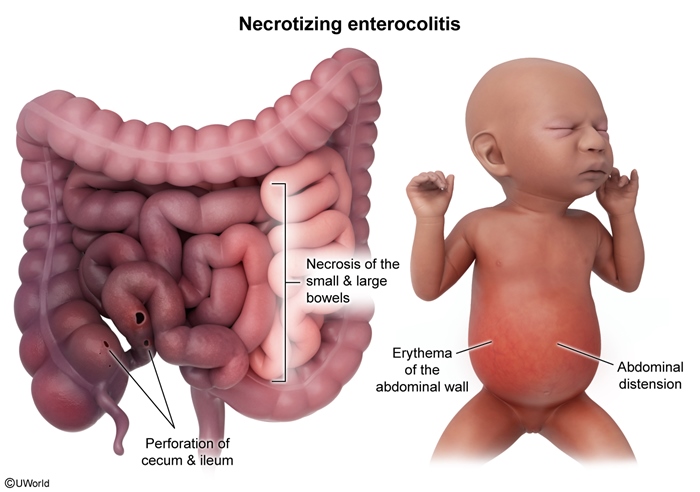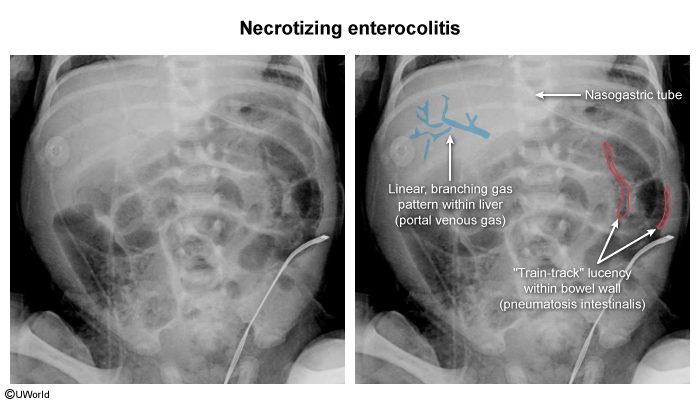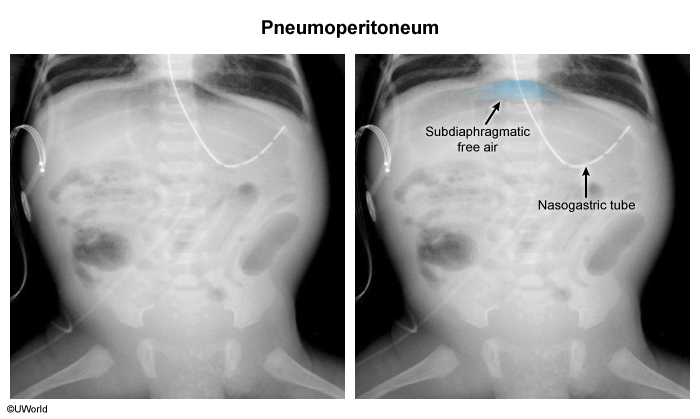Necrotizing Enterocolitis
Article Sections
Introduction
Necrotizing enterocolitis (NEC) is a life-threatening gastrointestinal condition that is characterized by bacterial invasion and necrosis of the bowel wall in preterm infants. Despite prompt diagnosis and treatment, NEC is associated with significant morbidity and mortality, especially in preterm infants with very low birth weight (<1.5 kg [3 lb 4 oz]).
Pathophysiology and risk factors
The pathogenesis of NEC is a multifactorial process that involves an exaggerated inflammatory response to microbial dysbiosis in a preterm infant. Specifically, intestinal (eg, insufficient mucin production, delayed gastric emptying) and immunologic (eg, insufficient IgA production, increased gastric pH) immaturity increases mucosal permeability in preterm infants. Environmental factors (eg, formula, antibiotic use) disrupt the intestinal microbiome, leading to microbial dysbiosis and bacterial overgrowth. Over time, pathogenic bacteria invade the permeable intestinal mucosa, resulting in marked inflammation that can extend into the submucosal layers. Inflammatory mediators (eg, cytokines) exacerbate mucosal injury and attract inflammatory cells, leading to apoptosis and cellular necrosis of the bowel wall. In severe cases, transmural inflammation and necrosis can lead to bowel perforation, peritonitis, and sepsis.
Continue Learning with UWorld
Get the full Necrotizing Enterocolitis article plus rich visuals, real-world cases, and in-depth insights from medical experts, all available through the UWorld Medical Library.
Figures

Images

